Frequent intake of simple carbohydrates, particularly in the form of dietary sugar has often being associated with higher risk for dental caries. It is therefore important to know why and how sugar can affect oral health.
Definition of sugar
The term sugars are conventionally used to describe monosaccharides and disaccharides such as sucrose, glucose and fructose which are classified as simple carbohydrates. These sugars can be found naturally in foods or they may be added to foods during food processing.
Scientists use the word ‘intrinsic sugars’ for sugars that are present naturally within the cellular structure of food such as that in fruits and vegetables. ‘Extrinsic sugars’ are sugars added to foods for example honey, glucose syrup, brown sugar or table sugar and those which are freely available in foods such as lactose in milk products.
Sugar intake and dental caries.
Many studies have shown that, as the frequency of sugar intake and the sticky consistency of sugary food increase, the rate of caries formation also increases.
Oral bacteria (Streptococcus) ferment simple sugars to produce acid. Frequent ‘supply’ of sugary foods produces a low pH (acidic) oral environment. Each time we nibble food or sip a drink containing carbohydrates (intrinsic or extrinsic sugars or starch), Streptococcus bacteria present on the teeth start to produce acid. The process of demineralisation, which happens when acid dissolves the minerals from the tooth surface, occurs when mouth pH drops below 5.5 (Critical pH). Sweet and sticky foods stick well on tooth surfaces, thus reducing the self-cleansing effect of saliva. Acid production may continue for 20 to 30 minutes after eating or drinking, longer if food debris gets trapped between the teeth or remains in the mouth. Frequent episodes of demineralisation will lead to caries and cavity formation.
Between periods of eating and drinking, saliva works to neutralise the acids and assist in the process of remineralisation (rebuilding teeth). This process is enhanced when fluoride is present. Sugary snacking in between meals will interrupt the remineralisation process. Replace sugary snacks with crunchy fruits such as guava or apple. You can also try sugar-free chewing gum that stimulates salivation to encourage remineralisation.
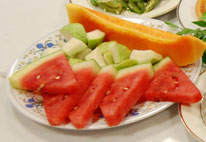
Diagram 1: Fresh fruits – healthier snack of choice
Studies show that oral bacteria can ferment both intrinsic and extrinsic sugars, so all carbohydrate-containing foods have the potential to contribute to tooth decay. However, lactose (milk sugar) is less cariogenic (potential to cause caries) compared to sucrose because mouth bacteria are not able to utilise lactose as readily as sucrose as an energy source.
High consumption of sugary foods is also a contributing factor to other health problems such as obesity, diabetes mellitus and cardiovascular disease. Excessive sugar consumption beyond the recommended amount will lead to an increase in body weight. Being overweight and obese will lead to an increased risk of acquiring diabetes mellitus type-2 and cardiovascular disease.
Healthy eating – reduce sugar consumption
The World Health Organisation (WHO) recommends limiting added sugar intake to less than 10% of total energy. [Refer to standard RDA (Recommended Daily Allowances) and RNI (Reference Nutrient Intake) The Food Pyramid is also a guide for healthy eating.
|
Age
|
RNI Calorie
|
Total Sugar Intake
(10%) |
Gram of Added Sugar
|
Tsp
(5g = 1 tsp) |
|---|---|---|---|---|
|
Toddlers and preschoolers (2-6 years old)
|
1000-1200
|
< 10%
|
<15g
|
3
|
|
Children
(7-10 years old) |
1500- 1600
|
<10%
|
<20g
|
4
|
|
Adolescent
(11-18 years old) |
1800-2000
|
<10%
|
25-40 g
|
5-8
|
|
Adults
(more than 18 years old) |
2000-2700
|
<10%
|
<50-65g
|
<10-13
|
Table 1: Sugar intake recommendation
Table 1 shows daily average calorie intake for moderately active individuals. Adults who are not physically active should limit sugar intake to less than 50g daily. Hidden sugar is often present as added sugars in cakes, biscuits, sauces, kuih-muih (local cakes), drinks, dried fruits, and other processed foods and drinks.
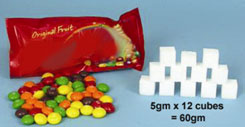
Diagram 2: Sweet and sticky confectionery
Check on these tips.
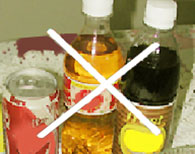
Diagram 4: Carbonated drinks and sweetened cordials are best avoided
- Reduce consumption of sugar by avoiding sugary snacks between meals. Reserve such foods for special occasions.
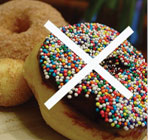
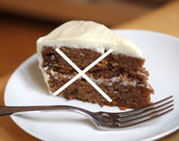
Diagram 3: Such foods are enticing; however intake between meals should be avoided.
- Choose healthier alternatives for snacks such as fresh fruit and vegetables (cucumber and carrot sticks, sweet turnip, cherry tomatoes, sweet corn etc.) sandwiches, unsweetened cereals and nuts.
- Use less sugar when preparing food and drinks. You can do this by reducing the amount of sugar gradually for your taste buds to adjust to the ‘new’ taste. Use no more than 1 teaspoon (5 gram) sugar for a cup of drink (200 ml).
- When eating out, order your drinks or beverages with less or no sugar. Plain water is the best for quenching your thirst.
- Avoid taking fizzy, carbonated and sports (isotonic) drinks frequently. These drinks often contain high amounts of sugar and are very acidic. Acidic drinks may cause the tooth surface enamel to dissolve.
- Breastfeeding is the best way to feed your baby. Do not start the habit of adding sugar when preparing powdered milk for your baby/ child. Choose unsweetened growing-up milk formula. Never leave your baby sleeping with the feeding bottle in the mouth. Young children may acquire early childhood caries (tooth decay) from prolonged bottle feeding especially when sweetened liquids are given.
- Do not introduce sugary foods to children below 12 months (one year) old. Introducing the sweet taste at a young age may contribute to children acquiring the ‘sweet tooth’. Parents, teachers or adults should also refrain from giving sweets, candies, chocolates, cookies and ice-cream as rewards to children.

Diagram 5: Refrain from using confectionery as gifts for children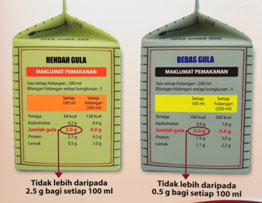
Diagram 6: Check nutrition labelling for sugar content - Check food labels for amount of sugar in processed food and drinks under Nutrition Information (Diagram 6). Choose foods or drinks with low sugar content. These are usually labelled as ‘low sugar’ or ‘sugar-free’.
Conclusion
Frequent intake of sugary food and drinks is not good for our health including our oral health.
For optimum oral health we need to brush our teeth with fluoridated toothpaste at least two times a day. It is also important to floss regularly to clean in between your teeth where needed. (Please create links to tooth brushing and flossing). Make an effort to have a dental check-up every year. You do not need to have any dental problems before you make an appointment with the dentist. Last but not least, remember to keep your body healthy through healthy eating and less sugar in your diet!
References
- Dietary guidelines for children and adolescents Workshop 2011: Final Draft- Key Message 12: Consume Foods and beverages Low in Sugar; Nutrition Division, Ministry of Health Malaysia
- Faizah K. (2004) Children’s prime-time TV advertisements potentially affecting oral health. MCD Dissertation. Faculty of Dentistry UM.
- Faqs.org (2010) Oral Health. Available at: http://www.faqs.org/nutrition/Ome-Pop/Oral-Health.html
- Health Education Authority (1990) Sugars in the Diet.
- Mandel I (1996) Caries prevention: Current Strategies, New Directions. JADA.Oct.1996 Vol.127;1477-1488
- Moynihan P.J (2002) Dietary advice in dental practice. British Dental Journal. Vol.193.
- MyHEALTH Portal article: Pemakanan: Fakta Tentang Gula. Available at: www.myhealth.gov.my
- National Coordinating Committee on Food and Nutrition MOH (2010) Malaysian Dietary Guidelines. Nutrition Division, Ministry of Health
- Pollard MA et al (1996). Diet and dental caries. In: The Sugar Bureau
- Rugg-Gunn et al. (1985). Effect of human milk on plaque pH insitu and enamel dissolution in vitro compared with bovine milk, lactose and sucrose. Caries Research Vol.19;327-334
- Rugg-Gunn, A.J.(1989). Diet and dental caries. In Murray, J.J. The Prevention of Oral Disease, 2nd ed. Oxford: Oxford University Press.
- The European Food Information Council (EUFIC) website: http://www.eufic.org/
- WebMD. Diet and Oral Health. Available at: http://www.webmd.com/oral-health/guide/diet-oral-health
- WSRO. Sugar and dental caries. Available at: http://www.wsro.org/public/sugarandhealthand dentalcaries.html
| Last Reviewed | : | 23 August 2019 |
| Writer | : | Dr. Faizah bt. Kamaruddin |
| Accreditor | : | Dr. Chew Yoke Yuen |
| Reviewer | : | Dr. Sharol Lail b. Sujak |







